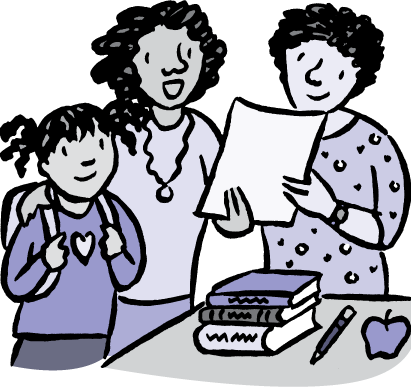
|
|
|
|
Notebooks, erasers, pencil sets and
backpacks are on most kids’ back-to-school lists. But if your child has
diabetes, you should add a few extra
tasks to the list. At the top, put “good
communication,” with your child and
with the school. Planning ahead, and
getting help from others, will help
pave the way for a successful year.
Diabetes is a serious and lifelong
condition, and it’s a growing problem
among children and teens. About
186,000 Americans under age 20
have diabetes. Most have type 1
diabetes, which usually first appears
during childhood. But in recent years
a growing number of kids are
being diagnosed with type 2
diabetes, a disease that used
to strike mostly adults
over age 45.
Excess weight
and inactivity
put children and
teens at risk for
type 2 diabetes.
When you
have diabetes, you have too
much glucose in
your blood. Over
time, this excess
glucose can
damage both large
and small blood
vessels, leading to heart disease,
stroke, nerve damage, blindness and
kidney disease. That’s why people
with diabetes must regularly check
their blood glucose. They need to
keep their level from dropping by
using strategies like snacking. When
their glucose is too high, insulin can
help to bring it down. Essentially,
they have to manage their blood
glucose level 24 hours a day, 7 days
a week.
This intensive management can be
daunting to kids during school. They
may wonder: What happens if I feel
light-headed, or need a snack in the
middle of class? Will I be OK in gym
class? When should I go to the nurse?
These are all issues that you should
discuss ahead of time with school
staff and with your child. Work with
your child’s health care team to
develop a written diabetes management
plan that outlines your child’s
specific medical needs. Make sure key staff members, like your child’s
teacher, have a copy of the plan.
Heading back to school with
diabetes can be a challenge. But by
eating regular meals, making healthy
food choices, staying active and taking
medications, kids with diabetes
can do all the things their friends do,
and then some. With planning and
good communication, you can help
your child have a healthy and happy
school year. |

